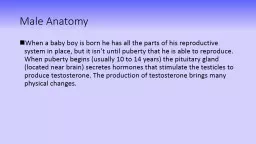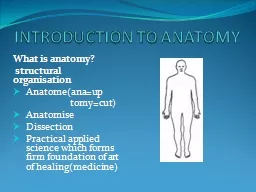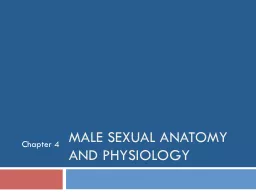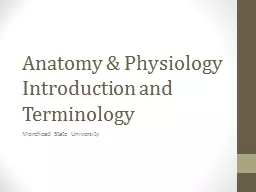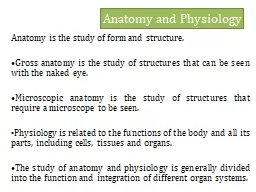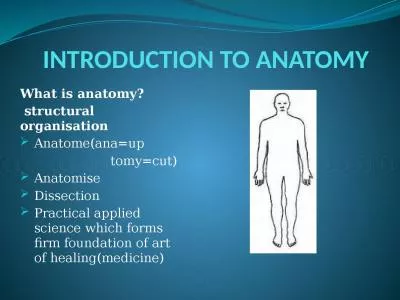PPT-Male Anatomy
Author : lindy-dunigan | Published Date : 2017-06-25
When a baby boy is born he has all the parts of his reproductive system in place but it isnt until puberty that he is able to reproduce When puberty begins usually
Presentation Embed Code
Download Presentation
Download Presentation The PPT/PDF document "Male Anatomy" is the property of its rightful owner. Permission is granted to download and print the materials on this website for personal, non-commercial use only, and to display it on your personal computer provided you do not modify the materials and that you retain all copyright notices contained in the materials. By downloading content from our website, you accept the terms of this agreement.
Male Anatomy: Transcript
Download Rules Of Document
"Male Anatomy"The content belongs to its owner. You may download and print it for personal use, without modification, and keep all copyright notices. By downloading, you agree to these terms.
Related Documents

